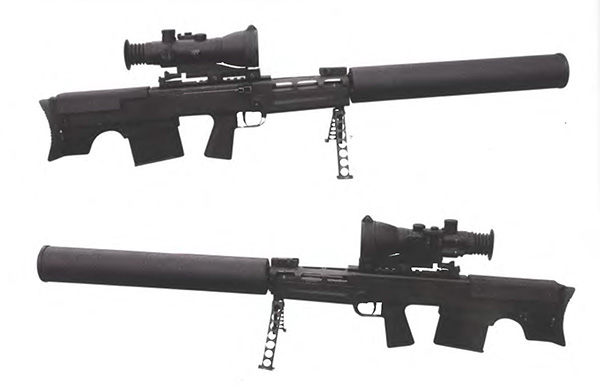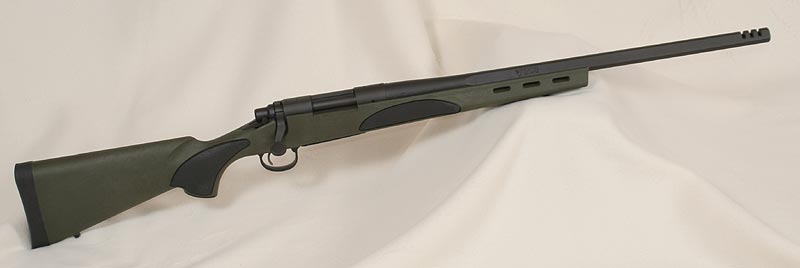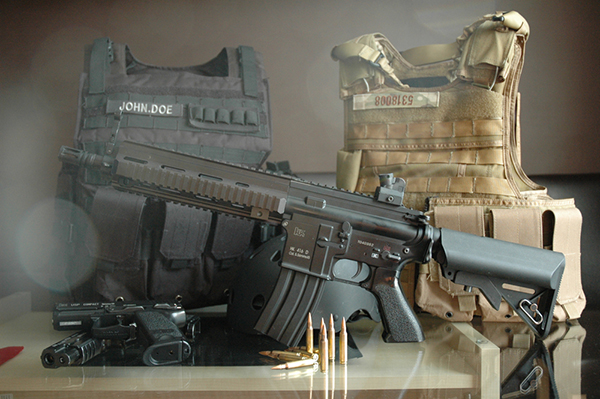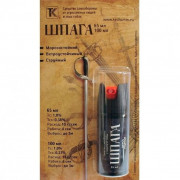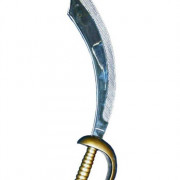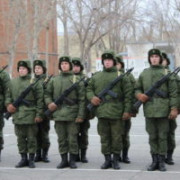Гаранд, джон
Содержание:
- John C Garand
- Примечания
- Биография[править | править код]
- Ранні роки[ред. | ред. код]
- Конструкция винтовки M1 «Garand»
- OverviewEdit
- TipsEdit
- Learn more about the M1 Garand rifle or related history and technology
- Call of Duty: World at WarПравить
- Примечания
- Розробка зброї[ред. | ред. код]
- Technical OverviewEdit
- The World of the M1 Garand
- HistoryEdit
John C Garand
John C Garand
worked at the US Army’s Springfield Armory and designed
a series of closely related rifles through the 1920s and
early 1930s.
These were evaluated in trials intended to replace the M1903
Springfield bolt-action rifle with a self-loading design.
He designed the T1E2 in 1932, and in
August 1933 the T1E2 was designated the
Semi-Automatic Rifle, Caliber .30, M1.
John Garand in the 1930s.
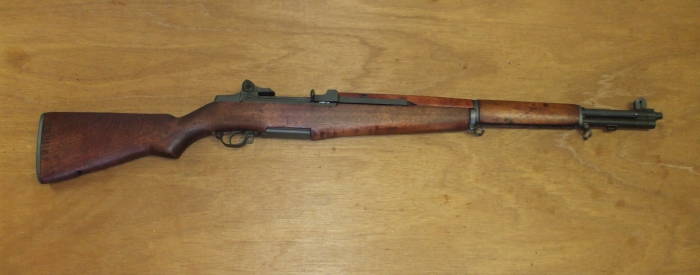
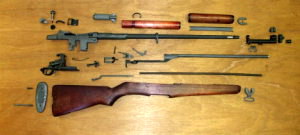
In 1936 the M1 Garand replaced the
M1903 Springfield as the standard service rifle.
The M1 Garand remained the standard service rifle of
the U.S. until the M14 was officially adopted in 1957.
However, the changeover from M1 to M14 in the active-duty
component of the U.S. Army was not completed until 1963,
and it was used in the U.S. Army Reserve,
U.S. Army National Guard and U.S. Navy at least into the 1970s.
Among several other nations using it, the M1 remained the
standard service rifle in Greece until the late 1970s and in
Haiti until the disbanding of the Haitian military in 1994.
The M1 Garand is still in use in the Philippines in the
Civilian Auxiliary Forces Geographical Unit (CAFGU)
and the Civilian Volunteer Organization.
Примечания
- Общим предком всех Гарандов в Северной Америке является Пьер Гаран (~1643 — 1700) из Руана, Франция.
- McCarten, John. The Man Behind the Gun (неопр.) // Reader’s Digest. — The Reader’s Digest Association, 1943. — Т. 42, № 253. — С. 51—54.
- ↑
- Bruce N. Canfield. The Unknown M1 Garand, American Rifleman, 142 (January 1994): 46–49.
- Bruce N. Canfield. The Winchester Garand, American Rifleman, Volume 153 (April 2005), pp. 46–49.
- Garand Gave Rifle to U.S., The New York Times, March 4, 1942.
- 1930 US Census, 7 April 1930, Springfield, MA, Sheet 5B, line 98
- 1940 US Census, 16 April 1940, Springfield, MA, Sheet 13B, line 72
- Объявление о свадьбе, The Springfield Republican, 5 October 1930, p. 6.
- John C. Garand obituary, The Springfield Republican, 17 February 1974, p. 62.
Биография[править | править код]
Родился на ферме близ Сан-Реми, Квебек, Канада. После смерти матери в 1899 году отец переехал в Джеветт-Сити, Коннектикут. До 11 лет посещал школу, затем начал работать на текстильной фабрике. Заинтересовавшись оружием, Джон научился стрелять и в свободное время тренировался в тире и задумывался о конструировании стрелкового оружия. Работая на текстильной фабрике, Гаранд получил квалификацию механика и в 1909 году устроился в компанию по производству инструментов «Браун и Шарп», которая находилась в Провиденсе, Род-Айленд. В 1916 году он нашёл работу в нью-йоркской компании по изготовлению инструментов, одновременно продолжая учиться стрельбе в тире на Бродвее. В 1920 году Гаранд получил американское гражданство.
Разработка оружияправить | править код
Разработкой оружия профессионально Гаранд начал заниматься в 1917 году. В этом году армия США объявила конкурс на создание конструкции легкого пулемета и именно конструкция Гаранда была отмечена Министерством обороны США. Гаранд был принят на работу в Бюро стандартов США в Вашингтоне, округ Колумбия. Ему было поручено совершенствование оружия. Первая модель была представлена только в 1919 году, то есть после окончания Первой мировой войны, но правительство оставило Гаранда в должности инженера в Спрингфилдском арсенале, Массачусетс,где он проработал с 4 ноября 1919 до выхода на пенсию в 1953 .
В Спрингфилде Гаранд получил задание на создание прототипа самозарядной винтовки и карабина, в которых выбрасывание гильзы и досылка следующего патрона должны были производиться с помощью пороховых газов, отводимых из ствола. Разработка эффективной, надежной и простой в разработке винтовки с учетом всех замечаний армии США растянулась на 15 лет. В результате появилась самозарядная винтовка М1 калибра .30, которая была запатентована в 1932 году и 9 января 1936 года была принята на вооружение армией США. Массовое её производство было начато в 1940 году. Она заменила винтовку M1903 Springfield и стала основным оружием пехоты под названием винтовка Гаранда. Во время Второй мировой войны было выпущено более четырех миллионов винтовок M1. Винтовки Гаранда доказали свою эффективность и надежность и получили высокую оценку генерала Макартура. Генерал Паттон назвал винтовку M1 Garand, «величайшим средством ведения войны из всех когда-либо созданных»
В конце 1940-х – начале 1950-х годов, Гаранд разработал и построил прототип автоматической винтовки по схеме «булл-пап». В ней использовался тот же патрон, что и в M1, но магазин, автоматика и форма были совсем другими. Эта винтовка имела возможность переключения на стрельбу очередями, а темп стрельбы был примерно 600 выстрелов в минуту. После выхода Гаранда на пенсию в 1953 году работы над второй версией винтовки было прекращено. Проект был закрыт, а винтовку направили в музей Спрингфилдского арсенала в 1961. Гаранд оставался в должности консультанта в Спрингфилдского арсенале после ухода в отставку в 1953 году.
Гаранд не получил ни одного роялти за свою винтовку, несмотря на то, что начиная с 20 января 1936 года их было выпущено более шести с половиной миллионов штук. Все права на это изобретение принадлежали правительству США. В Конгресс был направлен билль о премировании Гаранда на сумму $ 100,000, но он не был принят.
Джон Гаранд умер в Спрингфилде, Массачусетс в 1974 году. Похоронен на кладбище Гилкерст-парк в Спрингфилде.
Ранні роки[ред. | ред. код]
Гаранд народився на фермі поблизу Сен—Ремі, Квебек. Його батько переїхав до Джеветт—сіті, Коннектикут, з дітьми після смерті їхньої матері у . Діти були зайняті на текстильній фабриці, де Джон зміг вивчити англійську під час прибирання підлоги. Джон зацікавився зброєю і навчився стріляти після роботи у тирі. Під час роботи на текстильній фабриці Джон отримав знання механіка і був найнятий компанією з виробництва інструменту Браун та Шарп у , яка знаходилася у Провіденсі, Род-Айленд. Пізніше, у році, він знайшов роботу в нью-йоркській компанії з виготовлення інструментів і продовжив навчатися стрільбі у тирі на Бродвеї.
Конструкция винтовки M1 «Garand»
Самозарядная винтовка M1 Garand имеет газовый двигатель автоматики и неотъемный магазин с пачечным заряжанием. Механизм винтовки работает по принципу отвода пороховых газов через поперечное отверстие в стенке ствола.
Газовый поршень неподвижно прикреплён к затворной раме, запирание затвора происходит при его повороте вокруг продольной оси и сцеплении при этом двух его боевых выступов с пазами ствольной коробки.
Ударно-спусковой механизм — курковый, простого устройства, при разборке винтовки целиком отделялся от ствольной коробки. Флажковый переключатель предохранителя имел очень удачную конструкцию и располагался в передней части спусковой скобы. Для постановки на предохранитель он сдвигался внутрь спусковой скобы, и стрелок легко могу определить на ощупь, стоит ли винтовка на боевом взводе. Интересно, что при осечке, курок мог быть взведён оттягиванием задней части спусковой скобы вниз-вперёд за специальное колечко, то есть даже без необходимости передергивать затвор.
Магазин M1 «Garand» коробчатый, неотъемный, выполнен зацело со ствольной коробкой и не выступает из ложи. Заряжание магазина осуществляется пачками на 8 патронов, вставляемыми сверху при открытом затворе.
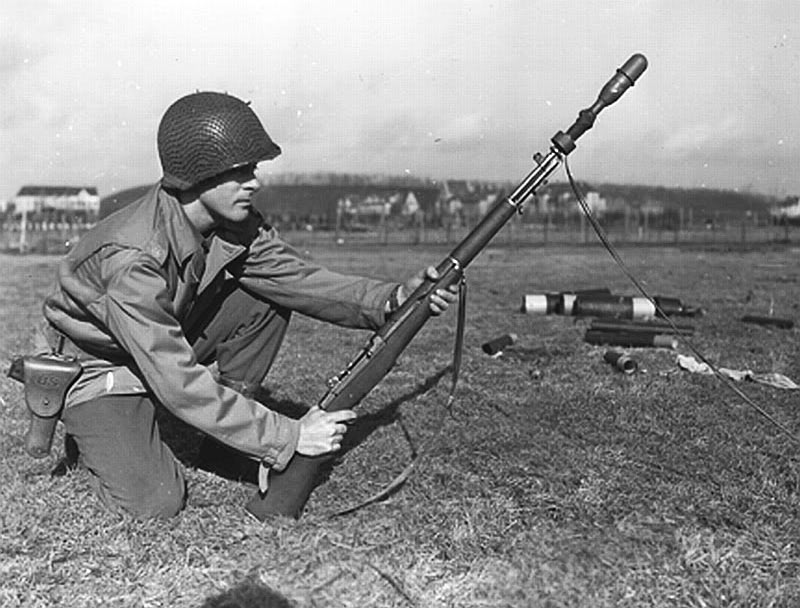
Самозарядная винтовка M1 «Garand» с ружейным гранатометом
Так как пачка, в отличие от обоймы, находится в магазине до тех пор, пока не будет произведен выстрел последним патроном, такой принцип устройства боепитания неоднократно критиковался из-за невозможности «дозарядки» оружия в бою. Однако все попытки оснастить «Гаранд» коробчатым магазином (от автоматической винтовки «Браунинг» BAR M1918), по какой-то причине так и остались на стадии эксперимента.
Ещё одна любопытная особенность M1 «Гаранд» также была связана с «пачкой» патронов. Дело в том, что по израсходованию боезапаса, пустая пачка автоматически выбрасывалась через открытое окно вверху ствольной коробки при открытом затворе, освобождая место для следующей пачки. При этом затворная рама оставалась в заднем положении благодаря действию затворной задержки. Всё это эффектное действо сопровождалось отчетливым звонким металлическим звуком.
С одной стороны, это здорово ускоряло перезарядку — бойцу нужно было просто сунуть в винтовку новую пачку и захлопнуть затвор. С другой, если противников отделяло друг от друга небольшое расстояние, враг, получив отчетливый «сигнал», что у бойца закончились патроны, мог атаковать…
Впрочем, учитывая то, что во-первых, в горячке боя на такие мелочи как посторонний звук, никто не обращает внимание, а во-вторых, что американский стрелок мог вызвать искомый звук простым ударом по винтовке кулаком, а затем подбросить в воздух другую патронную пачку… в общем, на этом факте не следует заострять внимание. Прицельные приспособления М1 «Гаранд» включают мушку закрытую с боков защитными «ушами», и диоптрический целик в задней части ствольной коробки и регулируемый по дальности
На снайперских вариантах винтовки были добавлены крепления для оптических прицелов на левой стенке ствольной коробки, причем ось прицелов была смещена влево от оси оружия, чтобы не перекрывать верхнее окно ствольной коробки, используемое для заряжания оружия и выброса стреляных гильз
Прицельные приспособления М1 «Гаранд» включают мушку закрытую с боков защитными «ушами», и диоптрический целик в задней части ствольной коробки и регулируемый по дальности. На снайперских вариантах винтовки были добавлены крепления для оптических прицелов на левой стенке ствольной коробки, причем ось прицелов была смещена влево от оси оружия, чтобы не перекрывать верхнее окно ствольной коробки, используемое для заряжания оружия и выброса стреляных гильз.
Ложа деревянная, с отдельным цевьем и верхней ствольной накладкой. На снайперских винтовках на приклад добавлялась съемная кожаная подушка под щеку, а также пламегаситель.
Винтовки М1 «Гаранд» могли комплектоваться штык-ножом (надевался на ствола), а также ружейным гранатометом (также надевающимся на ствол) для запуска винтовочных гранат при помощи холостых патронов.
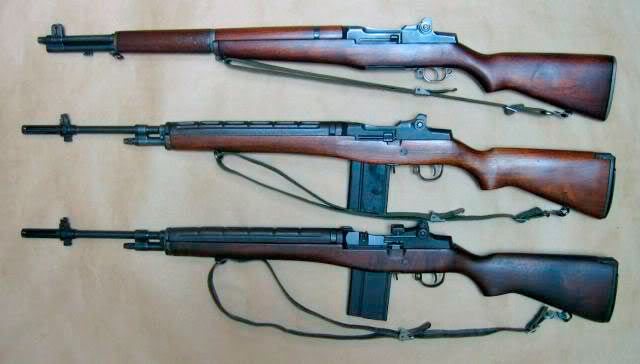
M1 «Garand», в том числе с более вместительным магазином
OverviewEdit
The M1 Garand is a semi-automatic Rifleman weapon and boasts the highest damage, 56 damage points. Though powerful, the M1 Garand was really made for close quarters, not long range combat. Despite the powerful 56 damage, the low 41 range and huge crosshairs makes the M1 Garand unsuitable for medium to long range combat. Aiming down the ironsights is a must, as that is the only way to maintain the 78 accuracy. The low range often times causes the player to shoot ‘’’more than 2 shots’’’ at medium to long ranges to kill an enemy. However, the M1 Garand bridges the gap between the M14 and the VSS. When ADS (aiming down sights), the M1 Garand has nearly no recoil and can be used similar to the AK200 and the AK-107bis, making the 38 stability a complete lie. The 8 round stripper clip puts the M1 Garand at another disadvantage- the inability of taking down multiple enemies at once.
TipsEdit
- Due to the incredibly low starting accuracy, always aim down the sights unless you encounter the enemy at point blank range.
- Aiming down the sights will greatly decrease recoil, bloom, and increase accuracy.
- Never try shooting at an enemy past 30 meters due to the low range. Just like the Walther P38, they both are powerful but lack range. As everyone knows, low range causes the damage to lower over distance, so you may try shooting someone at 40 meters and use the entire clip, while the enemy may walk away barely alive. However, please note that most enemies WILL choose to return fire.
- At medium to longer range, aim for the head. Headshots are the best way of avoiding enemies tanking the M1 Garand due to the lack of range.
- Like most capsule weapons, the M1 Garand has high penetration. It will likely “ignore” armor and deal damage. Use it to your advantage.
- Try to avoid the limbs. Though the M1 Garand is not a sniper rifle, it isn’t very much a Rifleman weapon either, boasting much higher damage than the top tier weapons. Just like any weapon, the M1 Garand will deal much less damage when shooting at the limbs. With the low ammunition count, it is highly advised to aim for the head or the chest/stomach area.
- Use your ammunition wisely. The ROF is very high if you can tap fast, so 8 rounds will go by like a breeze.
Choose one of the many topics below.
Home
Assemble a Garand from parts
Finding Manuals
Getting the Parts
Finish Reaming
Determining the Vintage and Source of Parts
Wood Restoration
Final Assembly
Ammunition
Barrel Break-In
Building a Custom Gun Case
M1 Garand Topics
The History of the M1 Garand
M1 Garand Troubleshooting
A Spreadsheet to Track Parts for Springfield Armory M1 Garands and M14s
The .30-06 Springfield Cartridge
M1 Garand Gas Pressure and the Operating Cycle
Safely Loading the M1 Garand While Avoiding Garand Thumb
Thomas Pynchon on Garand Thumb
The M1 Garand on Parade
Pistols
M1911 / M1911A1
TT-33 / TTC
ČZ-52
FÉG PA-63

Pistols
M1911
ČZ-52
TT-33 / TTC
FÉG PA-63
Gun Safety and Gun Laws
Guns, Swimming Pools, and Statistics:Which is more likely to cause an accidental
death: a gun or a swimming pool?
National Rates of Gun Ownership and Violent Crime:The U.S. has more guns and a lower homicide rate.
What Do Brady Campaign Rankings Really Mean?Even prominent anti-gun figures
find them worthless.
Defensive Gun Use in the U.S.How often are guns used defensively in the U.S.?
Section 922r Compliance for Military Surplus RiflesKeep your military surplus rifle legal.
Gun Maintenance and Cleaning
How to remove bluing (an anti-corrosion
surface treatment) from steel
How to parkerize steel (apply an anti-corrosion
and lubricating phosphatized surface
treatment)
Tools and techniques for cleaning guns
Be careful — Cleaning solvents can
produce poison gas
How to Treat Bad Rifle Karma
The ČZ-52 Czech Pistol
Introduction to the ČZ-52 pistol
7.62x25mm Tokarev Ammunition
Is the ČZ-52 really stronger than
other 7.62x25mm handguns?
Deciphering ČZ-52 markings, including the notorious «accuracy punch marks»
Important ČZ-52 safety notes
The ČZ-50 / ČZ-70 small pistol
More Vital Topics
Protect your feet!
Wrap your own Portyanki!
The meaning of «OTK» on Soviet and Czech military surplus
How to decode Soviet military surplus
ammunition labels
Gunsmith Horror Stories
Classic battle rifles: Comparing the AK47, M16/M4/AR15, and Mosin-Nagant
Clips Versus Magazines —
There Is A Difference!
Firearms philosophy of Ivan Chesnokov
Links to other sites we find interesting
or useful.
Call of Duty: World at WarПравить
| Карабин M1A1 | |
| Урон |
68-50 (SP)40-30 (МP) |
| Множители урона |
Одиночная игра:
Мультиплеер:
|
| Магазин |
15 патронов |
| Стартовый боезапас |
15+75 (МР)30+60 (МР) при увеличенных магазинах |
| Максимальный боезапас |
120 патронов (SP), 150 патронов (MP) |
| Перезарядка |
2,8 не полный, 3,7 полный2 реальная |
| Отдача |
Очень низкая |
| Пробивная способность |
Средняя |
| Используется | |
| Иконка подбора | |
Одиночная играПравить
В одиночной игре карабин М1А1 можно найти в Американской компании. Хотя встречается он редко. И больше всего в конце игры у американских солдат. У М1А1 и М1 Гаранд много общего. В одиночной компании у карабина слабая отдача, не очень сильная мощность пули и пробиваемость. Он более эффективен на средней дистанции. У карабина хорошая скорострельность, он убивает с трех- четырех выстрелов в торс и двух если повезет одного выстрела в голову. У карабина 15-ти зарядный магазин и его перезарядка кардинально отличается друг от друга почти 1.7 сек. пустой от полного. Карабин имеет много общего с СВТ-40 и Gewehr 43.
Сетевая играПравить
В сетевой игре карабин открывается на 65 уровне.Это последнее открываемое оружие в Call of Duty:World at War. Это отличное оружие, у карабина хорошая точность, мощность пули и скорострельность. Слабая отдача делает оружие доминирующим над СВТ-40. Но карабин становится доступным только на 65-м уровне. В мультипллеере карабин имеет 15-ти зарядный магазин, который позволяет убить несколько врагов с одного магазина. Так же в мультиплеере перезарядка производится быстрее чем в одиночной компании. Но медленнее чем у СВТ-40. Более эффективен на средней дистанции. Имеет уникальный звук стрельбы отличающийся от любого другого оружия.
СоветыПравить
Из перков лучшим выбором будет Убойная сила. Из первого слота подойдёт Патронташ т.к. скорострельность высокая и мощность пули низкая.
Зомби-режимПравить
В «зомби-нацистах» карабин можно встретить на всех четырех картах: в первой карабин стоит 600 игровых очков и еще 300 за боеприпасы. В зомби-нацистах карабин убивает зомби с трех выстрелов в торс и двух в голову на начальных волнах. Тем не менее оружие теряет эффективность к пятому уровню. На карте Der Riese улучшение оружия является пустой тратой 5000 игровых очков, так как улучшенный карабин «Виддершинс RC-1» имеет относительно маленькую емкость магазина и количество дополнительных боеприпасов, правда появляется автоматический огонь. На всех картах оружие можно найти в Таинственной коробке.
Примечания
- Оригинал фразы: In my opinion, the M1 Rifle is the greatest battle implement ever devised.
- Попенкер М. Р., Милчев М. Н. Вторая мировая: Война оружейников. М.: Яуза, Эксмо, 2008. стр. 527
- Jacob Byer. Conversion of Ml type firearms to M14 ammunition. U. S. Patent US3362095A (March 7, 1966)
- . Дата обращения 20 апреля 2020.
- Leroy Thompson. The M14 Battle Rifle. Osprey Publishing, Ltd. 2014. page 34
- ↑ (недоступная ссылка). Дата обращения 28 июля 2018.
- Mission to Haiti: the coutryside; singing and dancing, Haitians defy Military // «The New York Times» от 30 сентября 1994
- подполковник А. Рыжков. Подразделения и части греческой армии // «Военный вестник», № 10, 1963. стр.118-123
- в качестве примера, винтовки M-1 «гаранд» были захвачены сандинистами 5 июля 1979 года после штурма казарм в Хинотепе, где они находились на вооружении одного из провинциальных подразделений Национальной гвардииНикарагуа: путь борьбы и победы / сост. В. Г. Ткаченко, ред. К. Н. Курин. М., Политиздат, 1985. стр.209
- Народ на страже революции // «Известия», № 200 (20546) от 19 июля 1983. стр.5
- Gordon Rottman, Ron Volstad. Panama, 1989—1990. London, Osprey Publishing Ltd., 1991. page 14
- Julio A. Montes. Infantry Weapons of the Salvadoran Forces // «Small Arms Review», May 2000
- полковник-инженер запаса И. Есаян, подполковник-инженер запаса Е. Слуцкий. Оружие ближнего боя японской армии // «Техника и вооружение», № 1, 1981. стр.36-37
Розробка зброї[ред. | ред. код]
Гаранд у Спрингфілдському арсеналі
Любов Гаранда до техніки та стрільбі поєдналися у його хобі — виготовлення зброї, яким він почав займатися професійно у . У цьому році армія США оголосила конкурс на створення конструкції легкого кулемета і саме конструкція Гаранда була обрана Військовим міністерством США. Гаранд отримав посаду в Бюро стандартів США у Вашингтоні, округ Колумбія. Його робота полягала у вдосконаленні зброї. Перша модель була побудована лише у 1919, занадто пізно для використання у Першій світовій війні, але уряд залишив Гаранда на посаді інженера у Спрингфілдському арсеналі, де він працював з 4 листопада 1919 до виходу на пенсію у 1953.
У Спрингфілді, Массачусетс, Гаранд отримав завдання на створення основи для самозарядної гвинтівки та карабіну, які за допомогою відведення газів могли екстрактувати гільзу і досилати новий набій. Розробка ефективної, надійної та простої у розробці гвинтівки з урахування всіх зауважень армії США розтягнулася на 15 років. В результаті Semiautomatic, Caliber .30, M1 Rifle (англ. самозарядна гвинтівка калібру .30 М1) була запатентована Гарандом у 1932, і прийнята на службу армією США 9 січня 1936, а масове виробництво було розпочато у 1940. Вона замінила гвинтівку M1903 Springfield і стала основою зброєю піхоти під назвою гвинтівка Гаранда. За часів Другої світової війни було випущено більше чотирьох мільйонів гвинтівок M1. гвинтівки Гаранда довели свою ефективність і надійність та отримали високу оцінку від генерала Макартура.Генерал Паттон писав, «На мій погляд, M1 Garand найвизначніший засіб ведення війни з усіх коли-небудь створених.»
Гаранд цілиться зі своєї останньої розробки, T31 Bullpup
Наприкінці 1940-х — початку 1950-х, Гаранд розробив і побудував прототип гвинтівки за схемою булпап. Вона використовувала той самий набій, що й M1, але магазин, автоматика та форма були повністю іншими. Вона мала перемикач вогню, а темп стрільби був приблизно 600 пострілів за хвилину. Після виходу Гаранда на пенсію у 1953 роботи над другою версією гвинтівки T31 було припинено. Проект було закрито, а гвинтівку направлено до музею Спрингфілдського арсеналу у 1961.
Гаранд не отримав жодного роялті за свою M1, не зважаючи на випущену їх кількість — більше шести з половиною мільйонів починаючи з 20 січня 1936 року. Усі права на цей винахід належали уряду США. До Конгресу було направлено біль про преміювання Гаранда у сумі $100,000, але його не було прийнято. Гаранд залишався на посаді консультанта у Спрингфілдському арсеналі до відставки у 1953 і помер у Спрингфілді, Массачусетс у 1974. Його поховано на цвинтарі Гілкерст-парк у Спрингфілді.
Technical OverviewEdit
An M1 Garand
M1 is a gas operated, magazine fed, semiautomatic rifle. The original M1 were using gas that was tapped from muzzle by the special muzzle extension, but this was proven unreliable, and since 1939, M1 rifles were built with gas system that used a gas port, drilled in the barrel near the muzzle. The tapped gas was directed into the gas cylinder, located under the barrel, where it operated a long-stroke gas piston, integral with the operating rod. The long operating rod housed inside it a return spring, and ended with the extension, that carried a bolt operating groove at the left and a charging handle at the right. The groove was connected with the rotating bolt, located inside the receiver. The bolt had two locking lugs that locked into the receiver walls. When the gun was fired, hot powder gasses were led to the gas chamber and to the gas piston, which then drove back the operating rod. The bolt operating grove, interacting with the stud on the bolt, rotated bolt to unlock it and then retracted it to commence the reloading cycle.
Firing rifle grenades proved a problem for the Garand, as launching a 1.2-pound rifle grenade instead of a 0.02 pound bullet created sufficient excess pressure to severely damage or even outright destroy the gas system. Initially this was handled by issuing the squad grenadier a bolt-action M1903A3 Springfield with an M1 rifle grenade adaptor, or more rarely an M1917 Enfield with an M2. A launcher for the Garand, the M7 rifle grenade adaptor, was finally issued in 1943. This was designed to push open the Garand’s gas valve while mounted, turning the gun into a manually-operated repeater. The initial B147428 solid lock screw valve used on early-production Garands did not allow this at all, while the B147851 valve would not self-close after dismounting an M7 and required a shot to be fired to close it. It was not until January 1944 that the 7310079 «poppet» lock-screw with a self-closing valve was standardized. Postwar M7 models (A1, A2, A3) were redesigned to allow semi-automatic fire with the launcher mounted, by using the recoil from launching the grenade to force the launcher assembly back and push the gas valve open, venting gas only during the act of firing.
M1 was fed from the integral box magazine, which was probably the weakest point of the whole design. The magazine was fed using only the 8-rounds clips, which stayed inside the magazine until all 8 rounds were shot. As soon as the magazine (and clip) became empty, the bolt was stopped at its rearward position by the bolt catch, and the empty clip was automatically ejected from the magazine with a distinctive sound. The clips were not easy to top-up during combat, but the main issue was that the Garand was difficult to load with rifle grenade blanks.
M1 featured a wooden stock with separate handguards and a steel buttplate. The forwardmost part of the muzzle served as a bayonet mounting point. Sights of the M1 consisted of the front sight with dual protecting «wings», dovetailed into the gas block at the muzzle, and the adjustable peephole rear sights, built into the rear part of the receiver. Sniper versions (M1C and M1D) also featured scope mounts on the receiver, offset to the left from the axis of the rifle, so it was possible to load it with clips and also to use its iron sights with scope installed (in the case of the scope damage, for example).
There were some attempts to make a handier and more compact version of the M1 by shortening the barrel by some 6 inches (152 mm), with standard wooden or skeleton metallic buttstocks, but these attempts never left the experimental stages. Some short barreled «tankers» M1 rifles, appeared in the post-war period, are not the genuine designs, but the «sawed-off» variations of the standard «long» rifles.
The World of the M1 Garand
General George Patton wrote in January, 1945:
«In my opinion, the M1 Rifle is the greatest
battle implement ever devised.»
Here you will find information on its
history,
its
maintenance and cleaning,
safe ,
and how to
assemble an M1 Garand
from parts.
Who built it, what ammunition it uses, which armies
carried it, and who still uses the M1 Garand Rifle.
Plus details on several other historic firearms.
Here are some of the most popular pages.
Every page on the site has a full site map at the bottom.
Build an M1 Garand Rifle
Determine Vintage of M1 Garand Parts
Troubleshooting the M1 Garand Rifle
How to Field Strip the M1 Garand
The .30-06 Springfield Cartridge
How to Parkerize Steel
How to Remove Bluing from Steel
How to Restore Wood Gun Stocks
The M1911 / M1911A1 Pistol
How to Field Strip the SKS Rifle
How to Field Strip the AK-47 Rifle
The Mosin-Nagant Rifle
HistoryEdit
The story of the first semi-automatic rifle ever widely-adopted as a standard military arm began after the start of the First World War, when the inventor John C. Garand (a Canadian, then living in USA) began to develop a semi-automatic (or self-loading) rifle. He worked at the government-owned Springfield Armory and during the 1920s and early 1930 developed a number of designs. The first prototypes from 1919 to 1924 were built using the unusual primer actuated blowback which worked well, but due to the then new progressive burning propellant this system was unsuitable for a military rifle, so he switched to the more common gas-operated system. He filed a patent for his semiautomatic, gas operated, clip-fed rifle in 1930, and received an US patent for his design late in 1932. This rifle was built around the then-experimental .276 caliber (7mm) cartridge.
At the same time, his rifle was tested by the US Military against its main competitor, a .276 caliber Pedersen rifle, and was eventually recommended for adoption by US Army in early 1932. Shortly after, US general MacArthur stated that the US Military should stick to the old .30-06 cartridge. Foreseeing that, Garand already had a variation of his design chambered for 30-06. Finally, at the 6th of January, 1936, the Garand rifle was adopted by the US Army as the «rifle, .30 caliber, M1». Early issue rifles, however, showed quite poor characteristics, jamming much too often for a decent military arm: as a result, a lot of noise was raised that eventually reached the US Congress. In 1939, a major redesign was ordered, and Garand quickly redesigned the gas port system, which greatly improved the reliability. Almost all M1 rifles of the early issue were quickly rebuilt to adopt a new gas system, so very few «original» M1 Garand rifles survives to present days, and those that do are extremely expensive collectors items.
When the USA entered World War II, the mass production of the M1 rifles was set at the Springfield Armory and at the Winchester Armory. During the war, both companies built about 4 million M1 rifles, making the M1 Garand the most widely used semi-automatic rifle of World War II. During the war, the M1 Garand proved itself as a reliable and powerful weapon.
There were minor attempts to improve it during the war, but these did not leave experimental stages, except for two sniper modifications, M1C and M1D. Both were approved for service in 1945 and both featured a telescope sight which was off-set to the left due to the top-loading feature of the M1. After the end of World War II, the production of the M1 in the USA was stopped, and some rifles and also licenses to build it were sold to other countries, such as Italy and Denmark. With the outbreak of the Korean war in 1950, the production of the M1 for US forces was resumed early in 1952. Rifles were manufactured at Springfield Armory, and also at Harrington & Richardson Company (H&R) and International Harvester Company. Those companies manufactured M1s until 1955, and Springfield Armory produced the Garand until 1957.
M1 Garand US Army training video
With the official adoption of the new rifle and ammunition in 1957, M14 and 7.62x51mm NATO, respectively, for US service, the M1 rifle became obsolete. It was still used during the later years, however, due to the lack of M14 and M16 rifles, and saw some service during the early stages of the Vietnam war. Later, many M1s were transferred to the US National Guard, used as a training weapon by US Army or sold to civilians as a military surplus. Other users of the M1 were used by Italy (where these rifles were later redesigned and rebuilt into 7.62mm BM-59 rifles), Denmark, France and some other countries. There were also attempts to rebarrel the M1 for the 7.62mm cartridge in the USA and to adopt a detachable 20-rounds magazines from Browning BAR rifles, but these were less successful and haven’t seen any significant service. The M1 Garand remains a high sought after rifle, and is wanted in the civilian market for primarily hunting and target shooting.
In the early 2000s, McCann Industries manufactured M1 Garand big game rifles that are chambered in .458 Winchester Magnum. This version of the M1 was discontinued after around a decade of production, when McCann Industries’ primary gunsmith at the time had passed away. The base rifle is identical to the standard M1 Garand, McCann Industries added an aggressive muzzle brake on the barrel on a mercury cylinder in the stock to reduce and deflect recoil. The weapon also features McCann’s own M1 Garand Gas Trap Adjuster.


